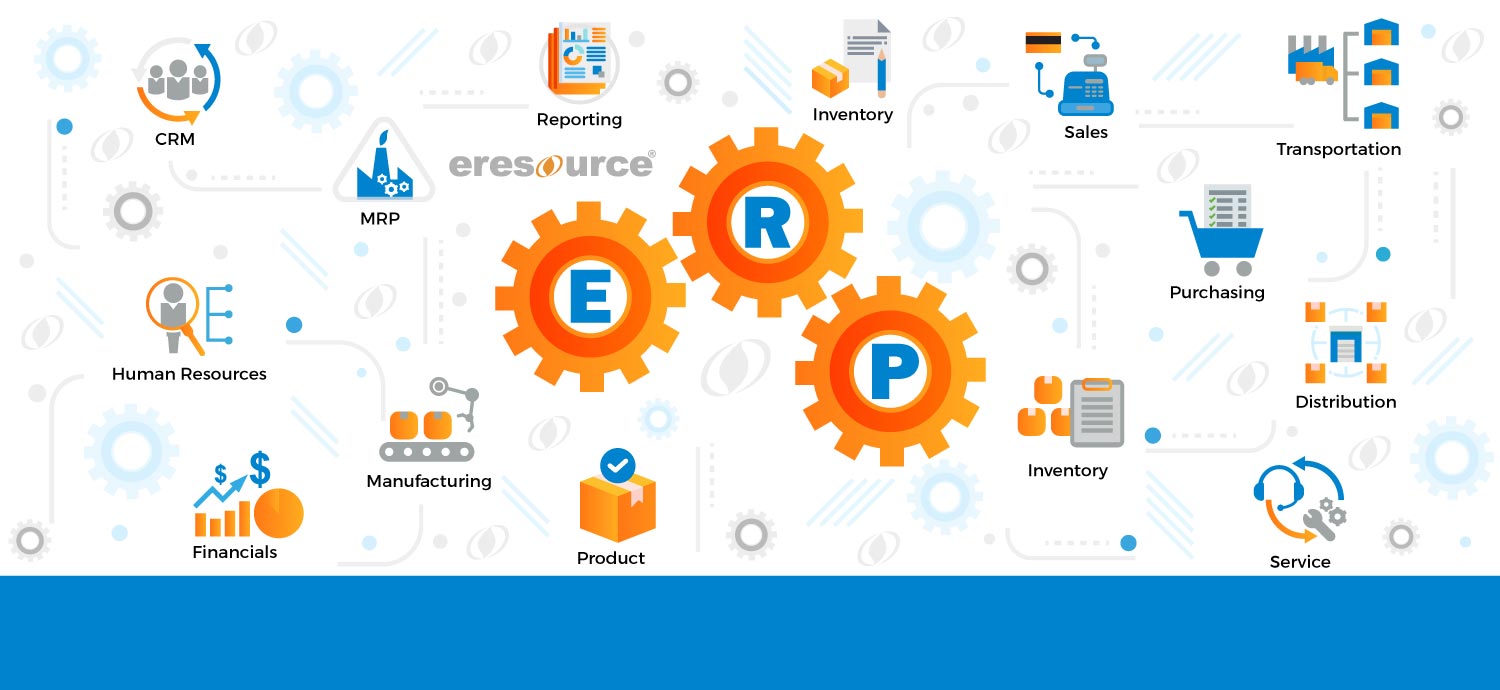Organizations must understand and study key success factors of an ERP Software before Implementation, as it is a major investment and commitment for any organizations. The size and complexity of ERP projects are the major factors that impact the cost of ERP implementations. Different companies may implement the same ERP software in total different approaches and the same company may integrate different ERP software applications by following the same procedures. However, there are factors common to the success or failure of ERP implementation regardless of the ERP systems they implement and the methodologies they use.
KEY SUCCESS FACTORS OF AN ERP IMPLEMENTATION
1. Project Planning
ERP implementation starts with project planning – setting project goals, identifying high-level business requirements, establishing project teams and estimating the project costs. Project planning offers the opportunity to re-evaluate the project in great details. If the ERP project is not justified at the planning phase, organization should not hesitate to cancel the project. For every successful ERP project there are projects that are cancelled before implementation.
2. Align the organization on the true destination
You should make sure that everyone in the organization has the same vision about the original motivations for implementation ERP-enabled processes: what the targeted capabilities were, as well as the targeted benefits. Only then can an organization really know how close its ERP program is to being complete. This alignment needs special focus on people: communicating, expectations, education, and top management support.
3. Architectural Design
While high-level architectural decision is made in the process of ERP vendor selection, it remains a crucial successful factor in integrating ERP with other eBusiness applications, e-commerce applications or legacy systems. Choice of middleware interface software or programming languages drastically impact the implementation cost and release date.
Also Read – How does ERP software deliver better ROI for your business?
4. Transition project roles to a way of life
Information technology people, ERP expert, process expert, site leaders, the project manager and the steering committee – going live can involve hundreds of people, in dozens of roles. But at go-live, once the program is operational, the way roles change and the way such change is orchestrated can be an even larger undertaking. Companies successful in the post-implementation phase are simply better at mobilizing and guiding such efforts. They are also better at preparing people for the critical shift, moving from being team members to champions.
5. Data Requirements
Unlike in-house e-Business applications, much of the packaged ERP implementation involves the integration of ERP systems with existing eBusiness software (CRM, SCM and SFA) and legacy information systems. Appropriate level of data requirements is critical for an ERP to interact with other applications. Data requirements usually reflect details of business requirements. It costs ten times to correct a mistake at later phase of ERP implementation than the effort to correctly define requirements at analysis and design phase.
6. Apply planning and program management practices throughout the program life cycle
If there is one thing that companies should master by the time they go-live, it is program management and planning. Companies that will succeed are those that accept the fact that if they are to achieve their benefits, the operation and maintenance phase demands at least as much planning as the implementation phase did.
7. Achieve balanced people, progress and technology chances across all areas
Companies undertaking the ERP journey must make changes and take action in all areas of the modern enterprise. They need the best-of-breed technology tools, the most effective work processes using world-class practices and people who are trained and motivated. They will also need strategies that fully leverage these new organizational abilities. Far from being a one-dimensional project, the ERP journey must keep change in play and in balance, in all these areas – a fact that successful companies never forget.
8. ERP must be driven by business case
In other words, the work must be directed toward improving specific business metrics: improved cash flow, faster hiring, reduced costs and accelerated shipments. Both line and IT managers must identify the processes that need improvement. Focusing on business process improvement is the only way to know whether you have got your money’s worth.
9. Active executive direction
Executive direction in this case means more than just oversight or support. People do not adapt to doing work in new ways without some inspiration from the top. ERP systems are huge, influencing thousands of people, processes, practices and policies. There are thousands of decisions to be made – both large and small. Someone at the top of the organization has to make the call.
Also Read – How does ERP help in the plastic manufacturing industry?
10. Focus on capabilities and benefits, not just going live
The ERP implementation was initiated because of its benefits. So it will not matter much if a schedule is missed by a few days or even weeks. However, if you miss out on an expected feature or benefit, then it is going to hurt. So make sure that all the features that were planned are implemented.
11. Make ERP-related decisions quickly
How about a rule that all decisions must be made within three days? This may seem arbitrary, but setting a fast and deliberate implementation pace is critical. Experience has shown that when an ERP project stretches more than 10-12 months, it is at risk – mostly because key team members move on.
12. Put the very best people on the implementation team
The natural tendency is to staff projects with people who are the most available. But these people may not have the skills or process knowledge required to get the job done. This is complex stuff. An ERP project will require the best talent that you have. And if you assign only part-time talent, then work gets prolonged and the project is at risk. ERP work is not just a project. It is the beginning of a continuous improvement process. There are at least five years of benefits to get out of any ERP implementation.
Also Read – ERP Software In India
Categories
Register for Free Demo!
Recent Post
-

eresource ERP 360 - an
11th Apr 2019 -

A competitive ERP system for
17th Apr 2019 -

Auto components manufacturing industry has
17th Apr 2019 -

Make the best use of
17th Apr 2019







